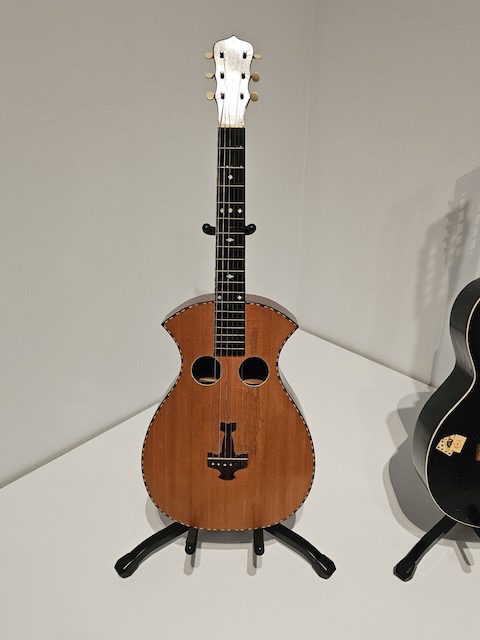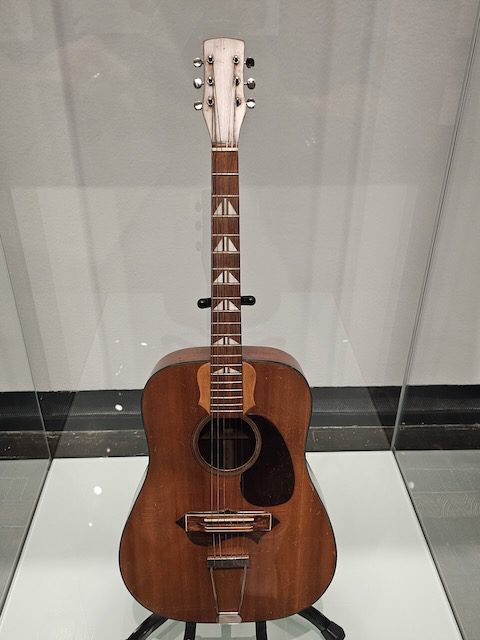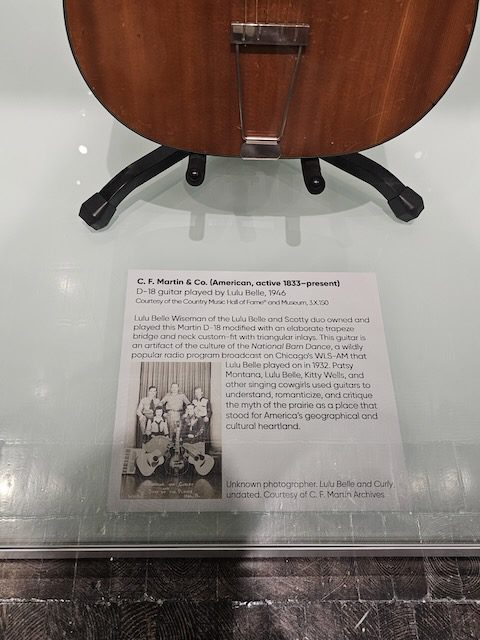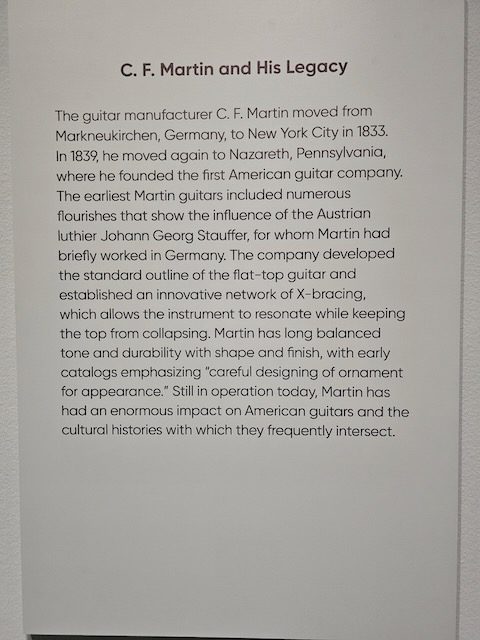The electric guitar was first invented in 1932, and it is attributed to an electrical engineer named Rickenbacker and a musician named Beauchamp. But real innovation that made it a go too instrument should be credited to Les Paul whose actual name was Lester Polsfuss (born 1915 and died 2009) and who can be credited with the solid body electric. The Gibson Les Paul was based on the man’s prototype called The Log. Today there are too many different types of Gibsons to enumerate….. but here’s an early model.
But there are other famous brands we need to talk about including Fender and Martin and Gretch, to name a few. I call the one below, a Fender Bender 🙂
Actually this molded work is modeled on the Fender Precision Bass. Here below are a bevy of guitars, see if you can identify some of them– Martins, Gretchs, Gibsons, Fenders, and more….
It was Fender in the 60s that was the most creative with design, for example with these paisley pattern guitars imitating paisley T shirts and shirts which were so popular at the time.
This one has an interesting history, once belonging to Eric Clapton.
Fender guitars have that recognizable notch in it so one can reach the higher notes on the higher strings, and also a fairly distinctive neck as well. I prefer the Stratocaster to the Telecaster and have a recent cherry red one which I play through a vintage Vox amp. Sounding good in the neighborhood. 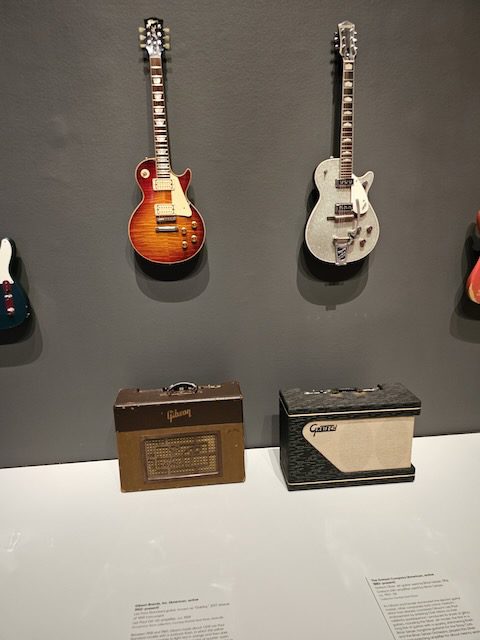
Notice the nobs. These showed up long before things like a whammy bar which guitarists like Jeff Beck made famous.
Of course long before there were solid body electric guitars, or even hollow body electric guitars, there were acoustic guitars from France, Germany, Spain, and especially the latter caught on in America and was dubbed the Spanish acoustic guitar. The most famous acoustic guitar of more recent eras is the Martin acoustic, and I have an acoustic electric one. Martin’s are remarkable for their deep rich tone, and their ability to hold the tamber of their strings. For me, they are the best. Here are some interesting acoustic guitars…
This is like a Spanish guitar, but with a fancy neck.
There were novelty guitars. Not sure I want one that stares at me!!
Obviously the sound that comes out of a guitar made out of metal instead of wood has a different character.
This quite obviously is a Hawaiian guitar.
I was very surprised there were no 12 string guitars in this exhibits, either acoustic or electric. At the beginning of the rock n’roll era, the electric 12 string was a sensation, created originally by groups like the Byrds (doing Bob Dylan’s ‘Hey Mr. Tamborine Man’). I love my Yamaha 12 string guitar.
One reason guitars became popular both in America and in Europe also ready in the 19th century (and elsewhere), is because they were much easier to play than other stringed instruments, for example a violin, not least because they had fret boards, and also because they were portable. It was difficult to cart around a big six string acoustic bass or cello, to say the least. And it was already clear after the Civil War that good money could be made, making guitars. Gibson got going in 1902, Fender much later in 1946. It was indeed Gibson that introduced the first sellable and viable electric guitar in 1936…
But even before Gibson, there was Gretsch in 1883. African Americans, like Charlie Christian pictured above, were some of the first to pick up electric guitars, and write Gospel, blues, jazz, and other sorts of music on them.
It should also be remembered that acoustic guitars even in the early 19th century were associated by up and coming white Americans with high brow European culture, and the following story about Andrew Jackson’s Secretary of State and family proves it….














